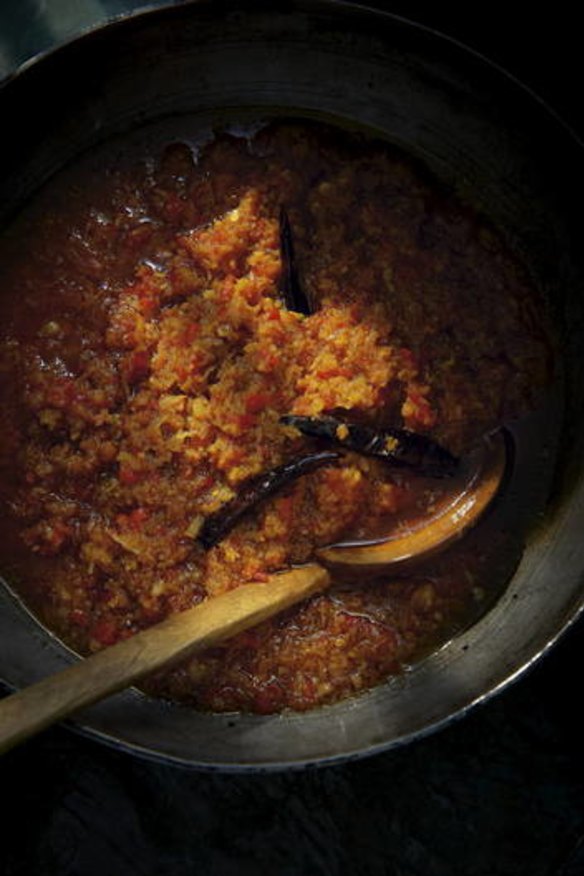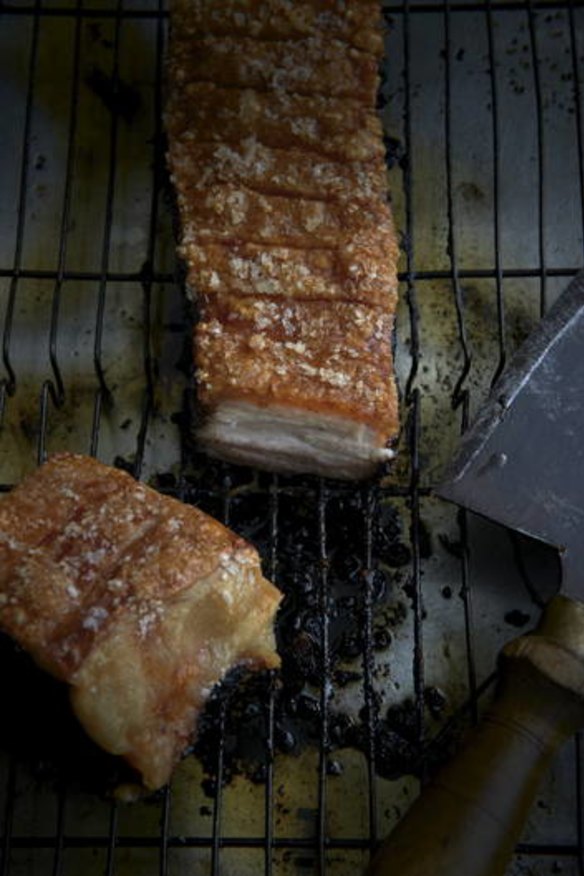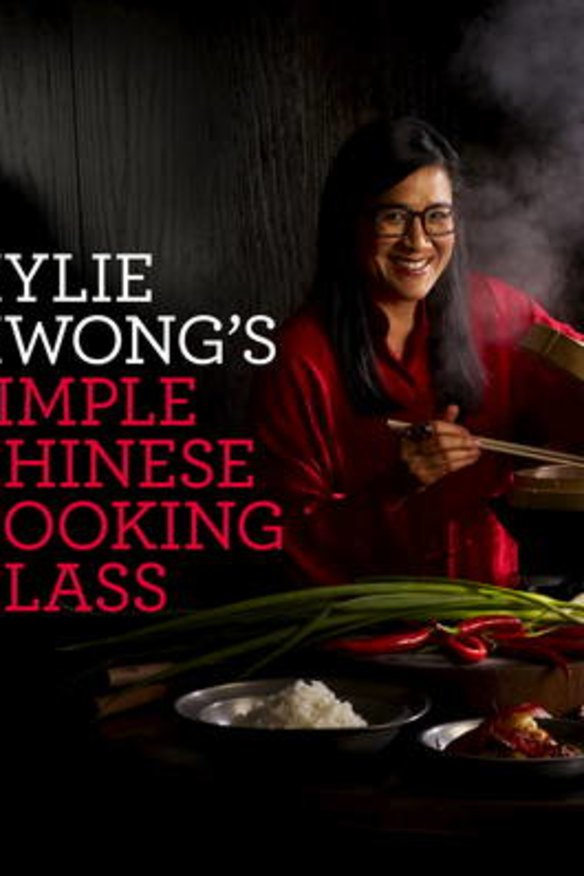The pursuit of XO-lence
Expensive to make, yes, but it's the key to a million-dollar dish.

FIFTEEN years ago, Kylie Kwong tasted a sauce in Hong Kong that she says changed her cooking forever. She was on a trip with then-boss Neil Perry when they ate at the famed Spring Moon restaurant at the grand Peninsula hotel. An impeccable maitre d' wheeled out a beautiful rosewood trolley; there was bird's nest soup and ''incredible, expertly carved Peking duck''. Most impressive, though, was the lobster, served with thin egg noodles and the Spring Moon's XO sauce.
XO sauce, Kwong says, is a relatively recent addition to Cantonese cooking and one she never stumbled across growing up with a Cantonese mother who did not like chillies.
The sauce originated in Hong Kong in the 1980s. Its name comes from XO (or extra old) cognac, considered supremely luxurious. Kwong researched the sauce when she returned to Australia and has served her own version since opening her Billy Kwong restaurant in Sydney 12 years ago.

Good XO sauce, she says, is like having ''money in the bank''. One of the main ingredients, dried scallops, can cost up to $300 a kilogram and the sauce can be labour-intensive. But Kwong insists it is worth making from scratch: ''Yes, it's expensive but it's versatile. All you need to do is fry an egg and steam some rice and put a dollop of XO on it and you've got a million-dollar dish.''
Kwong uses the sauce to elevate simple dishes such as fried rice, salads and stir-fried calamari.
While the dried shrimp, dried scallops, garlic and chillies are integral to produce the sauce's intense flavour and the ''chewy'' texture so loved by Chinese cooks, Kwong says chefs have always put their own stamp on XO.
Traditionally, XO sauce has used pork to impart a smoky flavour. Melbourne chef Tony Tan uses Iberico jamon because it's the closest he can find to the Jinhua and Yunnan ham used in Hong Kong.
The Flower Drum's Anthony Lui opts for Italian prosciutto, saying its nuttiness is similar to that of hams used in Shanghai.

Among Kwong's Sydney clientele are many who don't eat pork, so Billy Kwong's chefs opt for dry salted fish.
Her new book, Kylie Kwong's Simple Chinese Cooking Class, provides home cooks with an accessible recipe calling for smoky bacon.
Kwong remembers eating at Flower Drum when Gilbert Lau held the reins: ''He was always so proud of his XO. Gilbert would ask if you wanted to try some of his XO sauce, then he would disappear and he would come back with this amazing little ramekin of yumminess.''

XO Sauce
THIS is an oily, powerful-tasting, intensely textured, garlicky chilli paste. The small dried red chillies are optional, but I like the extra heat and the smoky, dark quality they add. Do take care when blistering them - they turn black quickly, and must be removed at once. If they blacken too much, simply discard them and start again. I serve a small bowl of XO sauce alongside meals; it also makes a good dipping sauce for boiled dumplings.
INGREDIENTS
55g dried shrimp
80g dried scallops
250ml Shaoxing wine or dry sherry
11 large red chillies, roughly chopped
7 garlic cloves, roughly chopped
2 large red shallots, roughly chopped
375ml peanut oil
3 dried small red chillies
55g smoked bacon, rind removed, finely diced
3 tsp light soy sauce
1 tsp brown sugar
METHOD
■Place dried shrimp in small bowl and cover with half of the wine or sherry.
■Place dried scallops in a medium-size bowl and cover with remaining wine or sherry. Liquid must completely cover the shrimp and scallops. Cover with cling wrap and leave in refrigerator overnight.
■Drain shrimp and reserve liquid. Drain scallops and reserve liquid. Mix shrimp and scallops together, and process until finely shredded. Remove and set aside.
■Place large red chillies, garlic and shallots in food processor and process until finely chopped. Remove and set aside.
■Heat peanut oil in a hot wok until the surface seems to shimmer slightly. Add dried chillies and cook for 30 seconds each side to blister and slightly blacken. Remove chillies with a slotted spoon and drain on kitchen paper. Reserve oil in wok.
■Reduce heat to medium, add chilli, garlic and shallot mixture and bacon to oil. Simmer, stirring regularly, for 3 minutes to cook out the flavours.
■Next, add shrimp and scallop mixture and cook for 6 minutes, stirring regularly - the oil should leach out at this stage.
■Add reserved soaking liquid from both the shrimp and scallops. Stir gently for 3 minutes to cook out the wine, then reduce heat to low and simmer, stirring occasionally, for 15 minutes.
■Add soy sauce, sugar and the blistered dried chillies and cook for 2 minutes. Remove from heat and allow to cool.
Makes 3 cups
Note: The XO sauce can be used straight away or cooled and stored in an airtight container in the refrigerator for up to 1 month (the flavours will intensify over this time). If serving as a condiment, be sure to remove required amount from refrigerator 30 minutes before serving.
Crispy soy-roasted pork belly
EVERYONE I know just loves pork crackling. To get good crackling, it's important to follow the steps here closely, especially the initial scalding of the skin, and then allowing the pork to thoroughly dry out, uncovered in the refrigerator, after it has marinated.
INGREDIENTS
1×800g piece free-range, boneless pork belly, skin on and scored (ask butcher)
500ml boiling water
1 tbsp sesame oil
1 tbsp salt flakes
For the marinade:
2 tbsp brown rice miso paste
1 tbsp five-spice powder
1 tbsp brown sugar
1 tbsp light soy sauce
METHOD
■Place the boneless pork belly, skin-side up, on a wire rack over the sink. Pour over boiling water to scald the pork skin - this will help the skin crisp up properly.
■Pat rind thoroughly dry with kitchen paper and place pork, uncovered, in the refrigerator for 2 hours.
■Remove pork from fridge and place, skin-side up, on a chopping board. Using the tip of a sharp knife, stab the pork skin until the surface is covered with holes, being careful not to go all the way through. Turn the pork over and make cuts about 2 centimetres apart and 1-centimetre deep.
■Combine marinade ingredients in a bowl and mix well. Rub marinade evenly over flesh side of the pork (not the skin) and massage into the cuts.
■Place pork, skin-side up, on a wire rack (this rack will be used for roasting the pork, so make sure it is ovenproof and fits inside a roasting tin) and place over a tray or large plate to catch any drips. Put in refrigerator and leave pork uncovered overnight, during which time the skin will dry out.
■The next day, bring pork to room temperature and preheat oven to 150C.
■Transfer pork and wire rack to a roasting tin. Rub skin well with the sesame oil, then scatter salt all over.
■Roast for 1½ to 2 hours or until tender (pierce the meat with a skewer - there should be no resistance).
■Increase oven temperature to 220C and continue roasting for 15 minutes. This final blast of heat will crisp up the skin, turning it into crackling.
■Remove pork from the oven and rest, uncovered, in a warm place for 15 minutes. To serve, cut into 1-centimetre-thick slices.
Serve as part of a banquet for 4
Kylie Kwong's Simple Chinese Cooking Class, Penguin, $59.95.
The best recipes from Australia's leading chefs straight to your inbox.
Sign up